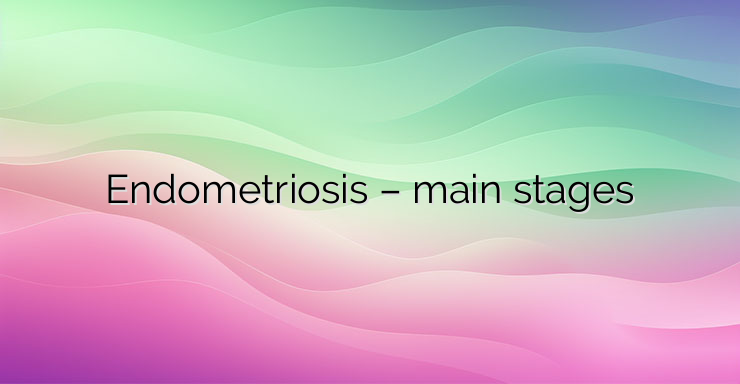Endometriosis is one of the most common diseases of the 21st century among women of reproductive age. One in ten women suffers from endometriosis, and the condition is widespread among more than 176 million women worldwide. But why is endometriosis such a dangerous and serious disease? The reason for this is its asymptomatic course in a large part of the patients and the damage it causes, namely – difficulties and impossibility to get pregnant. Another problem is that it takes an average of 7.5 years from the onset of symptoms to the diagnosis of endometriosis. Endometriosis is an inflammatory disease in which the growth of endometrial tissue (endometrial lesions) is observed in unusual places outside the uterus – in the fallopian tubes, ovaries, abdominal cavity, brain, lung, etc. There are different theories about what causes endometriosis. According to one of the theories, the cause of endometriosis is retrograde menstruation – movement of menstrual blood to the fallopian tubes. According to other theories, endometrial cells spread hematogenously and lymphogenously outside the uterus. It is believed that endometriosis can also occur with metaplastic conversion of the coelomic epithelium, and among some patients there is also a genetic predisposition. Although in most cases endometriosis occurs without clinical manifestations, there are symptoms that can direct the obstetrician-gynecologist to this diagnosis. Among these symptoms are: 1. Profuse, painful and prolonged menstruation (dysmenorrhea); 2. Pain during intercourse (dyspareunia); 3. Pain during urination (dysuria); 4. Severe pain in the pelvic region shortly before and during menstruation; 5. General malaise – weakness, easy fatigue, nausea, etc.; 6. Pain and tension during pelvic examination; 7. Presence of subfertility – reduced ability to conceive. What are the stages of endometriosis? According to the American Society for Reproductive Medicine (ASRM), there are four stages of endometriosis depending on the presence of endometrial lesions, their localization and infiltrativeness: I stage – stage of minimal damage, in which there are single superficial endometrial lesions; II stage – a stage of mild damage, in which more and deeper clusters of endometrial cells are observed; III stage – stage of moderate damage. During this stage, multiple, deep-seated endometrial masses develop. Cysts are formed in the ovaries, as well as fibrous adhesions; Stage IV – a stage of severe damage that is characterized by multiple deep endometrial masses, multiple adhesions, and huge cysts on one or both ovaries. The Endometriosis Foundation of America has created another classification of endometriosis. According to her, the first stage of endometriosis is defined as the so-called peritoneal endometriosis – the presence of endometrial tissue in the peritoneum is observed. The second stage of endometriosis is defined as ovarian endometriosis, or so.so-called chocolate cyst of the ovary. The cyst is called chocolate because of the brown color of oxidized blood. The first type of deep infiltrating endometriosis is defined as the third stage of endometriosis – the spread of endometrial tissue in the organs of the pelvic cavity. With the spread of endometrial tissue outside the pelvic cavity, endometriosis is defined by the fourth stage – the second type of deep infiltrating endometriosis. When and why does endometriosis cause infertility? Infertility has been found to occur in stage three and four endometriosis. The cause of infertility in women with endometriosis is the adhesions that have formed, which on the one hand deform the uterine cavity and make implantation of the embryo difficult, and on the other hand lead to blockage of the Fallopian tubes and make fertilization impossible. Another cause of infertility in women with endometriosis is the secretion of inflammatory cytokines from the endometrial tissue, which cause an inflammatory response, suppress ovulation and implantation. Diagnosis of endometriosis is surgical – through laparoscopy or laparotomy. The treatment can be surgical by removing the endometrial tissue accumulations and adhesions or medically – non-steroidal anti-inflammatory drugs are used to relieve the pain syndrome; gonadotropin-releasing agonists to reduce the size of endometrial lesions; oral contraceptives; aromatase inhibitors, also blocking the production of estrogens.


Leave a Reply